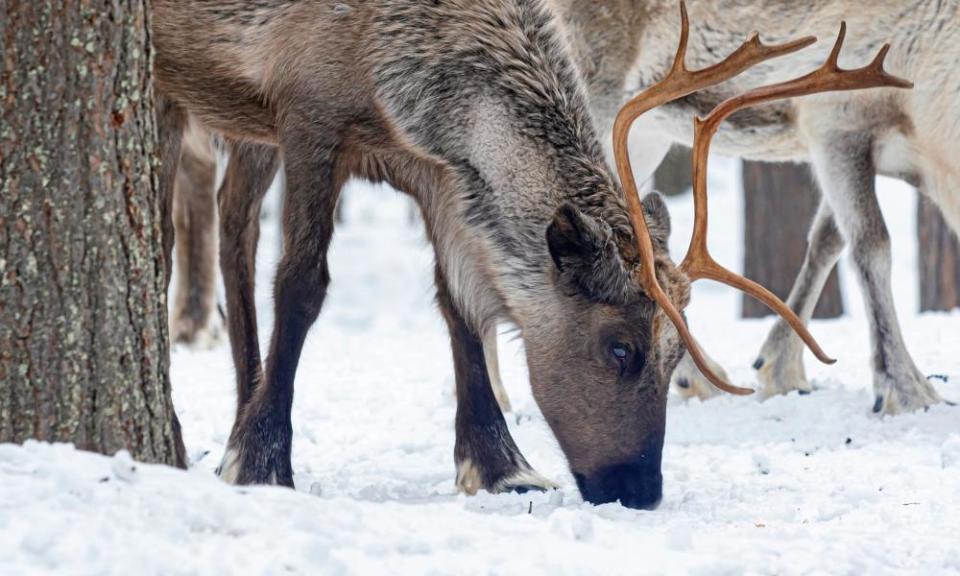Sweden to build reindeer bridges over roads and railways

Sweden is to build up to a dozen bridges so reindeer can safely cross railway lines and major roads in the north of the country as global heating forces them to roam further afield in search of food.
State broadcaster SVT said the transport authority aimed to start work on the first of the new bridges, named “renoducts”, a portmanteau from ren (reindeer) and viaduct, later this year near the eastern city of Umea.
“In a changing climate with difficult snow conditions, it will be extra important to be able to find and access alternative pastures,” Per Sandström, a landscape ecologist at the Swedish university of agricultural sciences, told the broadcaster.
Related: Sámi reindeer herders file lawsuit against Norway windfarm
Global heating is having a devastating impact on Sweden’s 250,000 reindeer and the 4,500 indigenous Sami owners who are authorised to herd them, with some winter grazing lands still recovering from unprecedented droughts and wildfires.
The animals are also finding it difficult in winter to reach the lichen that form a key part of their diet. While warmer summers help lichen grow, warmer and wetter winters are leading to rainfall rather than snow in the coldest Arctic months.
This means that when temperatures do fall back to below freezing, impenetrable sheets of ice form on ground that would normally be covered by a much softer crust of snow, leaving the reindeer unable to smell the food or dig down to get to it.
Increasingly the animals, raised for their meat, pelts and antlers, have to forage further afield in search of food, forcing them to cross railway lines or major roads that are often fenced off or where they risk being hit and killed.
The dozen bridges planned in the northern counties of Norrbotten and Västerbotten should ease the situation – and also mean authorities are no longer obliged to close the main north-south E4 motorway when a herd is on the move.
“I’m looking forward to us being able to cross undisturbed,” one reindeer herder, Tobias Jonsson, told the broadcaster, adding that he and his fellow herders were consulted on both the bridges’ location and their design.
“We were able to make sure, for example, that the bridges were open on the top,” he said. “There are 2 metre-high fences on the sides, so the reindeer cannot jump off. But it was important for them that it did not look like they were going into a tunnel. They do not want to be trapped.”

 Yahoo Finance
Yahoo Finance 